Mayo’s Clinic: Starting a Semester and Making It Special for Students
 Following the recommendations identified by the acronym, WARM, you can inspire students to reach for ultimate success from the moment they return to or begin their training.
Following the recommendations identified by the acronym, WARM, you can inspire students to reach for ultimate success from the moment they return to or begin their training.
By Dr. Fred Mayo, CHE, CHT
Last month, we discussed honoring and celebrating differences; this month, we will talk about ways to begin a semester by making our students feel special—not always something we think about it, given all the other tasks that face us in September, the time most U.S. colleges begin the year again. There are four major strategies: welcoming, asking, reminding and mixing it up, or WARM. Now might be a good time to consider adopting one or all of them.
Welcoming
Welcoming people has always been a fundamental principle of hospitality. As chefs, we welcome people by feeding them or otherwise offering them food. As teachers, we think about the first class of the term, and we do it well.
This year might be a useful time to think about welcoming them back to the institution, however. As your students come back to the campus after a summer break or an internship/coop/apprentice/work experience, how do you greet them? Do you look for ways to welcome them back to school? Do you invite them to notice all the changes that have been made over the summer? Do you focus on providing each of them with a compliment? Or ask about accomplishments? Have you reviewed the organization of your office and considered rearranging it to be more welcoming to new and returning students? These and other questions will help you think about how to welcome your new and returning students to the campus.

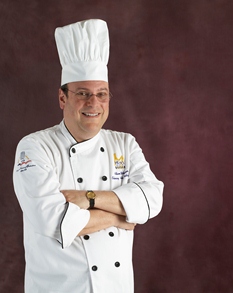 Students in teams don’t necessarily have to like each other, says Chef Weiner. They won’t have the luxury of choosing their teammates in the real world, after all. But they do have to learn to work together to execute a successful meal. Here are proven tips to teach them how.
Students in teams don’t necessarily have to like each other, says Chef Weiner. They won’t have the luxury of choosing their teammates in the real world, after all. But they do have to learn to work together to execute a successful meal. Here are proven tips to teach them how.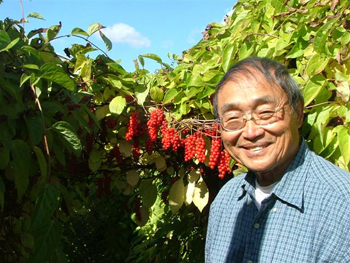 Dr. Tso-Cheng Chang was a pioneer of “no pesticides or herbicides” farming in the United States. His farm, which grows vegetables for his award-winning restaurant in Amherst, Mass., not only is one of the largest bean-spout producers in the nation, it also grows schizandra berries—which might be the ginseng of this decade.
Dr. Tso-Cheng Chang was a pioneer of “no pesticides or herbicides” farming in the United States. His farm, which grows vegetables for his award-winning restaurant in Amherst, Mass., not only is one of the largest bean-spout producers in the nation, it also grows schizandra berries—which might be the ginseng of this decade. OMNI-TV host and associate producer Lucy Zilio visited the Culinary Arts Centre at Centennial College in Toronto recently to take in the sights and aromas of a live kitchen lesson. In a video (110 seconds) on the program’s website, Zilio speaks with chef and professor Samuel Glass about the special focus Centennial’s program places on international cuisine. Visit
OMNI-TV host and associate producer Lucy Zilio visited the Culinary Arts Centre at Centennial College in Toronto recently to take in the sights and aromas of a live kitchen lesson. In a video (110 seconds) on the program’s website, Zilio speaks with chef and professor Samuel Glass about the special focus Centennial’s program places on international cuisine. Visit 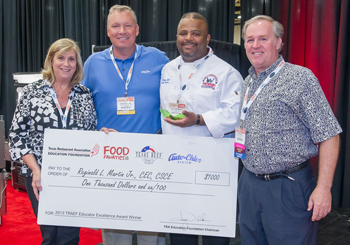 Chef Reginald Martin, culinary-arts instructor at Westside High School in Houston, Texas, is the recipient of the Texas Restaurant Association Education Foundation’s 2013 Educator Excellence Award. Martin has been leading Westside’s program since 2008 and has more than 100 students enrolled in the program.
Chef Reginald Martin, culinary-arts instructor at Westside High School in Houston, Texas, is the recipient of the Texas Restaurant Association Education Foundation’s 2013 Educator Excellence Award. Martin has been leading Westside’s program since 2008 and has more than 100 students enrolled in the program. 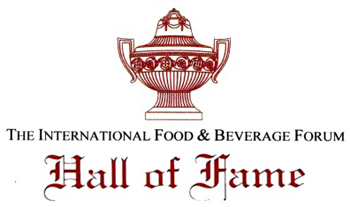 The great work of chefs and those in the hospitality industry is often gone once guests leave the restaurant, but a new Hall of Fame at the esteemed Le Cordon Bleu College of Culinary Arts in Chicago will showcase the work of the best in the industry. Le Cordon Bleu in Chicago has been chosen to house the new International Food & Beverage Forum “Hall of Fame.”
The great work of chefs and those in the hospitality industry is often gone once guests leave the restaurant, but a new Hall of Fame at the esteemed Le Cordon Bleu College of Culinary Arts in Chicago will showcase the work of the best in the industry. Le Cordon Bleu in Chicago has been chosen to house the new International Food & Beverage Forum “Hall of Fame.”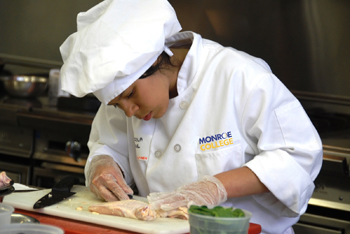 Gabriela Grande, a culinary-arts student at Monroe College in the Bronx, N.Y., has added a victory in the “Lead Like Mike” competition to her list of impressive culinary accomplishments. Grande was the 2010 America’s Best High School Chef winner, a C-CAP student from Food and Finance High School, and the first Monroe culinary student to compete at the American Culinary Federation’s Northeast Regional Conference, where she won a gold medal and finished second overall.
Gabriela Grande, a culinary-arts student at Monroe College in the Bronx, N.Y., has added a victory in the “Lead Like Mike” competition to her list of impressive culinary accomplishments. Grande was the 2010 America’s Best High School Chef winner, a C-CAP student from Food and Finance High School, and the first Monroe culinary student to compete at the American Culinary Federation’s Northeast Regional Conference, where she won a gold medal and finished second overall. 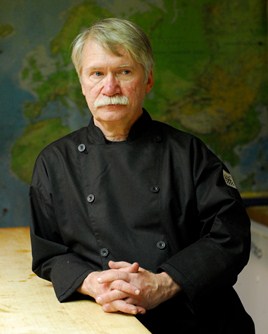 Simply preparing for your classes and delivering material is never sufficient. You have an obligation to yourself, your students and your institution to stay in touch with the industry you represent by building your personal, professional brand.
Simply preparing for your classes and delivering material is never sufficient. You have an obligation to yourself, your students and your institution to stay in touch with the industry you represent by building your personal, professional brand.